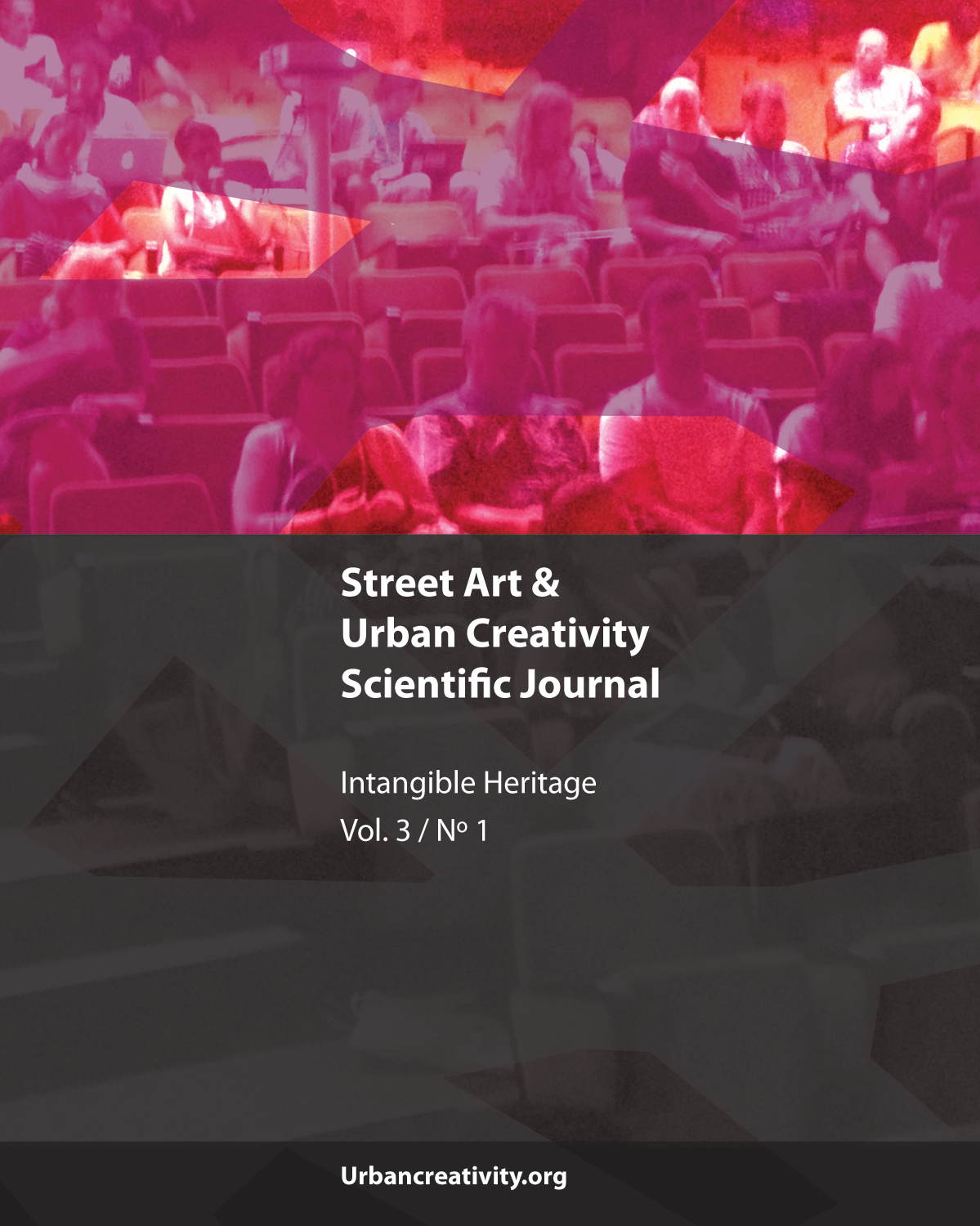From ‘either/or’ to ‘both/and’:
Some thoughts on graffiti and street art conservation, curatorial practices and the handling of cultural heritage
DOI:
https://doi.org/10.25765/sauc.v3i1.67Keywords:
Street Art and Graffiti Conservation, Urban Art Expositions, Urban Art Museums, Curatorial Practices, Cultural HeritageAbstract
The institutionalization of street art and graffiti has been discussed a thousand times. My article takes the next step and asks: Are we not simply in charge of reevaluating the ‘interventions’ happening outdoors, be they commissioned or not, and integrating them into (fine art) shows, exhibitions and museum collections – with no attempt to plexiglass? The long-term perspective might be an equal treatment of commissioned and uncommissioned artworks, as well as the appreciation and self-confident exposition of their direct and unambiguous linkage. This article includes interviews with Pietro Rivasi (Italy) and Robert Kaltenhäuser (Germany) and refers to the ‘BLU controversy’ in Bologna, Italy. The text was written with regard to an exhibition that took place in Herne, Germany, where I contributed as a curatorial and scientific assistant.
Downloads
Global Statistics ℹ️
|
159
Views
|
42
Downloads
|
|
201
Total
|
|
Downloads
Published
How to Cite
Issue
Section
License
Those authors who publish in this journal accept the following terms:
-
Authors retain copyright.
-
Authors transfer to the journal the right of first publication. The journal also owns the publishing rights.
-
All published contents are governed by an Attribution-NoDerivatives 4.0 International License.
Access the informative version and legal text of the license. By virtue of this, third parties are allowed to use what is published as long as they mention the authorship of the work and the first publication in this journal. If you transform the material, you may not distribute the modified work. -
Authors may make other independent and additional contractual arrangements for non-exclusive distribution of the version of the article published in this journal (e.g., inclusion in an institutional repository or publication in a book) as long as they clearly indicate that the work was first published in this journal.
- Authors are allowed and recommended to publish their work on the Internet (for example on institutional and personal websites), following the publication of, and referencing the journal, as this could lead to constructive exchanges and a more extensive and quick circulation of published works (see The Effect of Open Access).













